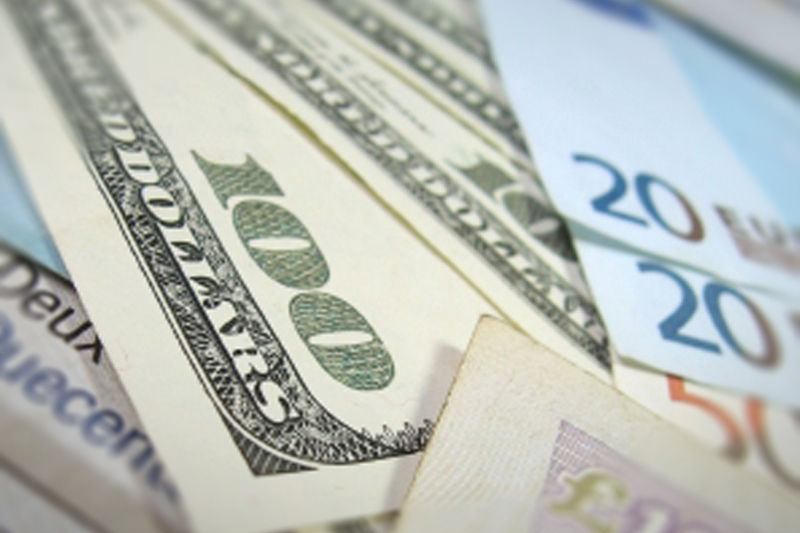Investing.com -- The U.S. dollar rallied by more than 1% against the euro on Tuesday, amid weaker than expected services data in the euro zone and expectations for a delayed interest rate hike by the Federal Reserve.
EUR/USD fell 0.0116 or 1.06% in U.S. afternoon trading to 1.0807, moving steadily lower from a daily-high of 1.0956 in European morning trading. European markets reopened on Tuesday after a four-day weekend for the Easter holiday.
The pair likely gained support at a low of 1.05 from March 11 and resistance at 1.11, the high from Mar. 4. On Monday, EUR/USD moved above 1.10 for the first time since Mar. 25, before falling back to 1.094.
While the Markit Eurozone Services Business Activity Index increased from 53.7 in February to 54.2 in March, expansion in output still fell below previous estimates of a 54.3 reading. Increases in Germany, Italy and Spain accelerated growth while the United Kingdom's service-sector PMI peaked at 58.9, to reach a multi-month high.
Price discounting throughout the euro zone drove growth on the continent.
“The PMIs are indicating somewhat sluggish GDP growth of 0.3% for the first quarter.," said Chris Williamson, Chief Economist at Markit. "However, the important message from the survey data is that the pace of expansion looks set to gather pace in coming months.
Meanwhile, in the U.S. Federal Reserve Bank of Minneapolis president Narayana Kocherlakota said at a speech on Tuesday that the Fed may not need to raise its benchmark Federal Funds Rate until the second half of 2016.
"In light of the outlook for unduly low employment and unduly low inflation, the Fed can be both late and slow in reducing the level of monetary accommodation," Kocherlakota said in a speech to the Chamber of Commerce in Bismarck, N.D.
The comments came in light of a disappointing U.S. jobs report last Friday when the U.S. Bureau of Labor Statistics said in its monthly jobs report that the economy added 126,000 in March, halting a streak of 12 consecutive months of job growth that exceeded 200,000. The modest job increases nationwide marked the weakest period of hiring in 15 months. In terms of average weekly earnings, employees nationwide received the smallest annual gains in wages since last June.
The labor force participation rate, which measures the number of people who are either employed or actively looking for work, also painted a bleak outlook. During the month of March, the rate ticked down to 62.7%, the lowest level in 36 years.
In mid-March, Federal Reserve chair Janet Yellen indicated that the Fed could begin raising interest rates when it was "reasonably confident" that inflation will move toward its target inflation of 2%. Yellen added that the Fed will take a "data-driven" approach to potential liftoff by keeping a close eye on wage and GDP growth before raising rates.
Yields on the U.S. 2-year, meanwhile, have ticked up to 0.520, after reaching a two-month low at 0.47 late last week. At Tuesday's 3-year note auction of U.S. Treasuries, yields stood at 0.865% with average demand of $24 billion. Many analysts believe the lower yields reduce the possibility that the Federal Reserve could increase rates by June.
The U.S. Dollar Index, which measures the strength of the greenback versus a basket of six other major currencies, edged up on Tuesday by 0.95 points to 98.16
